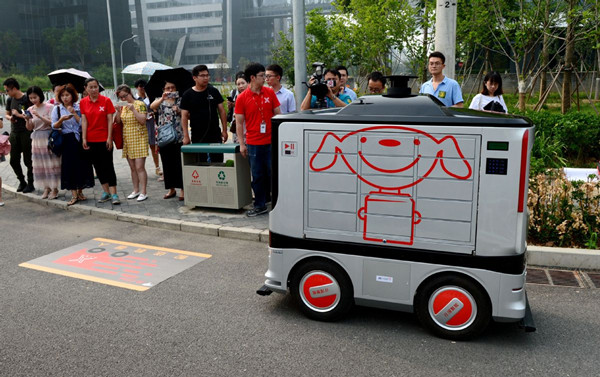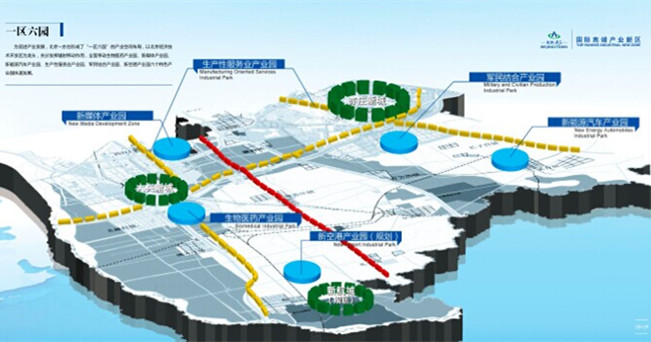Delivery robots, start your engines
( China Daily )
Dozens of small robots, driverless vehicles combined with express pickup containers, took to the streets for the first time from the Shangdi delivery station in northwest Beijing's Haidian district on Monday to improve delivery service and reduce costs.
The red and white automated delivery robots stood in a shining line at 10 am on Monday around the Shangdi distribution center, one of e-commerce giant JD's main delivery stations.
The driverless vehicles delivered 30 boxes of products, their top speed reaching 15 kilometers per hour. The robots, which automatically stop at red traffic lights, can carry up to 300 kilograms of goods.
The deliveries "covered most of the residential areas near the distribution station", said Yang Jing, general manager of the autonomous vehicle center at JD's artificial intelligence technologies research department.
Data on the machines were already on record with the Beijing Commission of Transportation's local transport department before they took to the road, Yang said.
The robots, driving in the nonmotor-vehicle lanes, pick up goods left at local distribution centers by couriers. Navigating by radar and sensors, the robots avoid barriers and pedestrians, respond accordingly to traffic signals and make their way to the delivery sites.
"We are using delivery robots to reduce the human costs of traditional delivery service," Yang said. "At the same time, it improves transportation efficiency."
A surveillance center monitors the vehicles' whereabouts through data and video the robots transmit.
JD has already employed delivery machines in several closed areas, such as college campuses and closed off industrial communities.
In June last year, robots delivered packages on the campus of Renmin University.
JD plans to put more than 100 delivery robots in use in more than 20 Chinese and foreign cities, such as Shanghai, Tianjin, Xi'an and Bangkok.
The company said on Tuesday that delivery efficiency will be greatly improved, but it gave no details on how robots will be integrated in the process.
Liu Daizong, China transport program director at the World Resources Institute, said more guidelines are needed on how to operate unmanned vehicles on public streets.
Especially if such vehicles are heavily loaded, "crashes on the road could have huge consequences for pedestrians and cause damage," Liu said.
Liu, an expert member of the Beijing Commission of Transportation, said so far Beijing has only set standards for unmanned vehicle road tests, and detailed guidelines need to be worked out.
"Standards still need to be tested, and less weight (than the 300 kg maximum) might be the safe option for the delivery robots," he added.
Retail giant Amazon has also been using automated delivery robots, starting with drones at the end of 2016 in the UK to improve the transport efficiency.
 |
|
A JD delivery robot draws the attention of passers-by in Beijing on Monday. Dou Yiming / For China Daily |
 The Area with Six Parks
The Area with Six Parks Global Top 500
Global Top 500